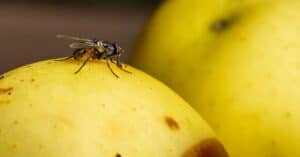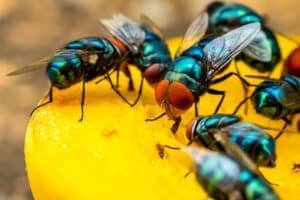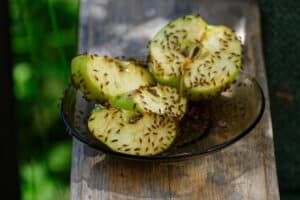Flies are among the most prevalent insects, with hundreds of thousands of species already known and many others still to be identified. One of the most common species of flies is the horsefly. These insects can be found everywhere, except for a few islands and polar regions like Hawaii, Greenland, and Iceland.
Female horseflies bite humans and other animals in order to acquire blood, and they are frequently huge and nimble in flight. When not slurping blood, the female and the male both consume nectar and other plant liquids. Some horseflies are actually beneficial as pollinators, but the female requires a blood feast in order to give birth. Because of their dietary choices, it is safe to wonder if horseflies have teeth. If yes, what does it look like and how do they use it? Let’s find out!
How To Identify Horseflies
Gadflies are the collective name for both horseflies and botflies. Looking at a horsefly’s overall size is the most simple approach to identifying one. Compared to other biting flies, the insect is usually larger and has eyes that are frequently patterned and colored. Males’ eyes are so large that they almost touch the top of the head.
Generally, horseflies have large compound eyes that can be vividly colored or exhibit iridescence depending on the lighting. They avoid dark and shaded regions and prefer to fly in the sunlight, and are not active at night. As opposed to females, who have eyes that are far apart, males have eyes that are almost touching. They have a ringed, hairless antenna end. The fly’s head and thorax, which is the center of its body, are covered in hair, and its wings are either clear, cloudy gray, or brown in color. The claws on their legs allow them to grasp their prey. Different species can be distinguished from one another by subtle variations in their heads, wing vein patterns, and color patterns on their bodies.
Do Horseflies Have Teeth?
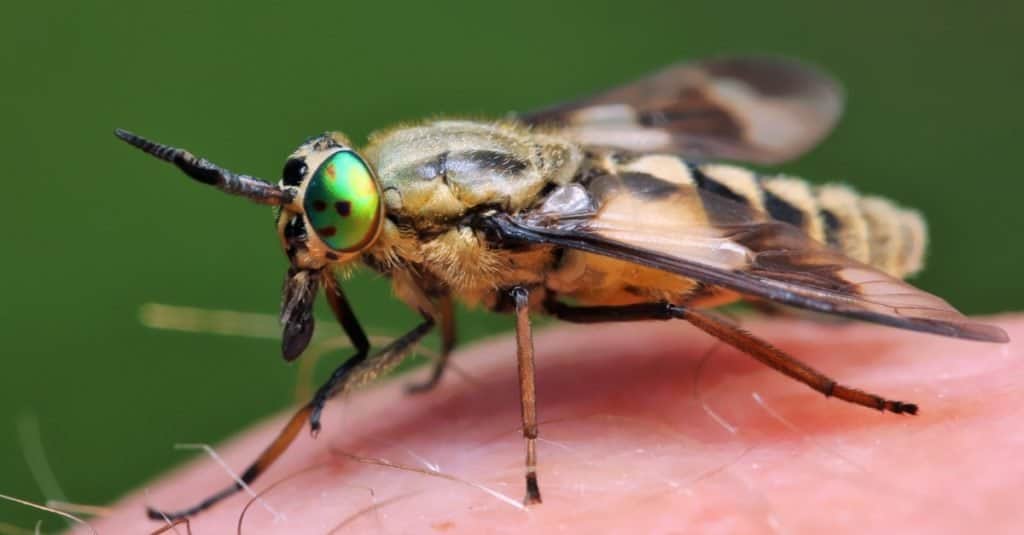
Horseflies do not have teeth.
©Achkin/Shutterstock.com
It is not uncommon for flies of different kinds to land on a piece of food, but the big question is do they actually take a bite out of the food? It might surprise you to find that flies in general do not have teeth. Horseflies are no different from most other flies. These insects cannot actually eat a mouthful of food because they don’t have normal teeth.
Horseflies inject a small amount of their saliva into wound and suck up the liquefied tissue with their proboscis. It is safe to assume you are undoubtedly wondering how they can bite us if they have no teeth. The answer is simple – horseflies slice rather than bite. Their mouth features two pairs of cutting blades along their edge. They can slice apart flesh because the mandible, part of their mouth, has strong cutting edges. Some flies also just bite with their sharp, needle-like proboscis because they do not have a cutting edge at all.
How Do Horseflies Feed?
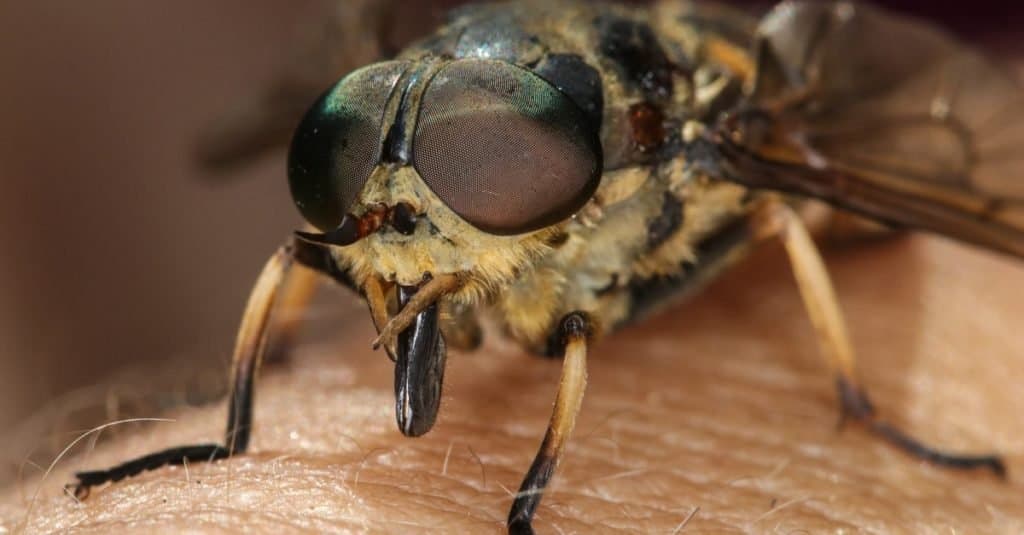
Horseflies are cannibals.
©Geza Farkas/Shutterstock.com
Equipped with mouthparts that resemble blades, the blood-feeding adult female horse fly slashes tissues and blood arteries, causing blood to flow to wounds. Then, females suction blood into their mouthpieces, which resemble sponges. Males have comparable but far weaker mouthparts and solely consume pollen and nectar.
One thing to note about horsefly larvae is that they also have chewing or tearing mouthparts for feeding and have been found to eat other larvae in the absence of food. Just like adult horseflies, these larvae are extremely predatory and cannibalistic. Because female horseflies typically lay their eggs near sources of water, horseflies generally devour microscopic organisms that are found in water or on land as well as decomposing materials when they are in their larval stage.
Are Horseflies Dangerous To Humans?
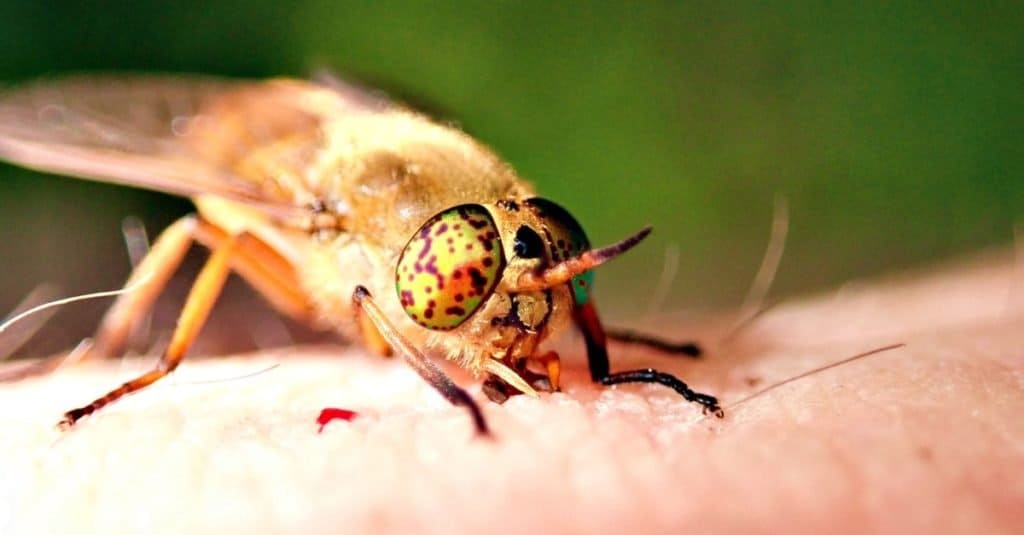
Horsefly bites normally do not hurt humans but are bad for horses.
©JumpingSpiderss/Shutterstock.com
If you see a fly on your food, you usually do not have to throw it out. There is no question that flies can transfer bacteria, viruses, and parasites from garbage to our food, but for the average healthy individual, a single touchdown is unlikely to start a chain reaction that results in sickness.
Since flies are unable to chew our food, they spit out some enzyme-rich saliva in order to partially dissolve it. This enables them to ingest the ensuing soup of regorged digestive fluids and partially digested food. There is a great likelihood of a healthy population of viruses being left behind if a fly has lots of time to move around on our food while sucking in, vomiting up, and defecating.
Horsefly bites normally do not hurt humans, aside from the little discomfort they produce. When a horsefly bites, she rips into your flesh with her cutting stylets, widening the wound that results. Her tongue, which functions like a sponge, soaks up the blood as the incision leaks. This is called telmophagy. A horsefly bite can be treated like a mosquito bite. Apply a cool compress, wash the wound, and be careful not to scrape it. However, horses are the only animals affected by these attacks. This is so because horseflies spread swamp fever, also known as Equine Infectious Anemia.
Up Next:
Fly Poop: Everything You’ve Ever Wanted to Know
Horsefly VS Housefly: How To Tell The Difference
The photo featured at the top of this post is © Wong Gunkid/Shutterstock.com
Sources
- National World, Available here: https://www.nationalworld.com/news/weather/horsefly-season-uk-what-do-horsefly-bites-look-like-how-to-treat-them-and-are-the-giant-flies-dangerous-3319252
- Amazing Animals Planet, Available here: https://amazing-animals-planet.com/post/what-type-of-mouthparts-do-horse-flies-have
- Pets on Mom, Available here: https://animals.mom.com/flies-teeth-10684.html
Thank you for reading! Have some feedback for us? Contact the AZ Animals editorial team.



